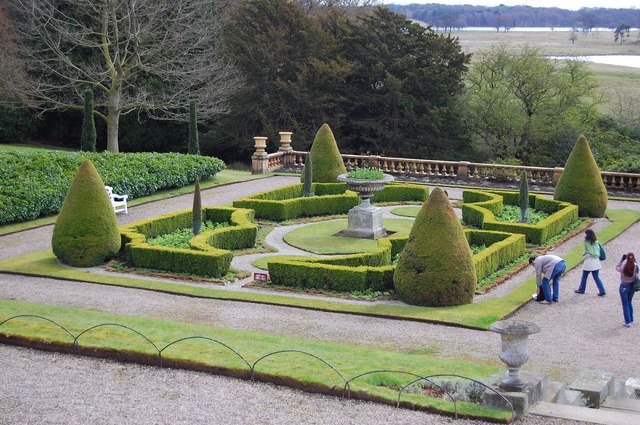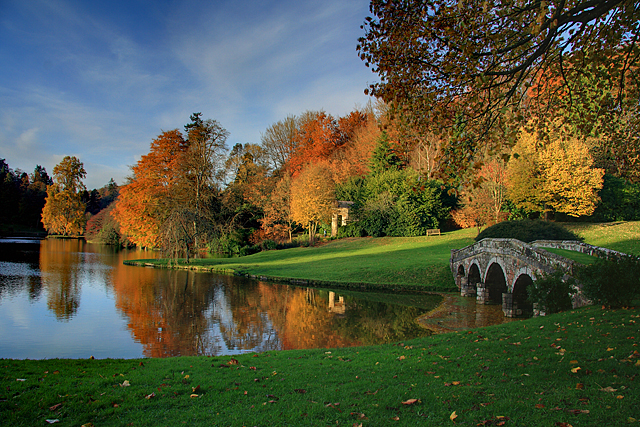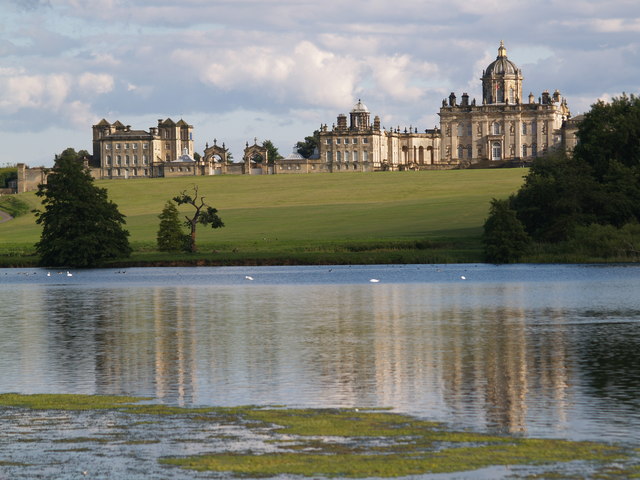|
Fernery
A fernery is a specialized garden for the cultivation and display of ferns. In many countries, ferneries are indoors or at least sheltered or kept in a shadehouse to provide a moist environment, filtered light and protection from frost and other extremes; on the other hand, some ferns native to arid regions require protection from rain and humid conditions, and grow best in full sun. In mild climates, ferneries are often outside and have an array of different species that grow under similar conditions. In 1855, parts of England were gripped by ‘pteridomania’ (the fern craze). This term was coined by Charles Kingsley, clergyman, naturalist (and later author of The Water Babies). It involved both British and exotic varieties being collected and displayed; many associated structures were constructed and paraphernalia was used to maintain the collections. In 1859, the Fernery at Tatton Park Gardens beside Tatton Hall had been built to a design by George Stokes, Joseph Paxton's a ... [...More Info...] [...Related Items...] OR: [Wikipedia] [Google] [Baidu] |
Tatton Park Gardens
Tatton Park Gardens consist of formal and informal gardens in Tatton Park to the south of Tatton Hall, Cheshire, England (). Included in the gardens are an Italian garden, a walled garden, a rose garden, and the Japanese garden. The buildings in the garden are the Conservatory, the Fernery and the Showhouse. The gardens are owned by the National Trust and administered by Cheshire East Council. They are on the National Register of Historic Parks and Gardens and have been designated at Grade II*. The gardens are open to the public at advertised times. History The first formal gardens were created around the early 18th-century house and consisted of a walled garden to the south of the house, a formal semicircular pond to its north and formal lines of trees to the east and west. Later Samuel Wyatt set out an avenue of beeches to the south, which is now the Broad Walk. An arboretum was created during the 18th century and additions have been made to it since. The earliest re ... [...More Info...] [...Related Items...] OR: [Wikipedia] [Google] [Baidu] |
Pteridomania
Pteridomania or fern fever was a Victorian craze for ferns. Decorative arts of the period presented the fern motif in pottery, glass, metal, textiles, wood, printed paper, and sculpture, with ferns "appearing on everything from christening presents to gravestones and memorials". Description ''Pteridomania'', meaning ''Fern Madness'' or ''Fern Craze'', a compound of ''Pteridophytes'' and '' mania'', was coined in 1855 by Charles Kingsley in his book ''Glaucus, or the Wonders of the Shore'': According to one author: Collection and cultivation The collection of ferns drew enthusiasts from different social classes and it is said that "even the farm labourer or miner could have a collection of British ferns which he had collected in the wild and a common interest sometimes brought people of very different social backgrounds together". For some a fashionable hobby and for others a more serious scientific pursuit, fern collecting became commercialised with the sale of mer ... [...More Info...] [...Related Items...] OR: [Wikipedia] [Google] [Baidu] |
Benmore Botanic Garden
Benmore Botanic Garden (formerly known as the Younger Botanic Garden) is a large botanical garden situated in Strath Eachaig at the foot of Beinn Mhòr, on the Cowal peninsula, in Argyll and Bute, Scotland. The gardens are on the west side of the A815 road from Dunoon, between the Holy Loch and Loch Eck, and include footbridges across the River Eachaig. It is one of the sites of Royal Botanic Garden Edinburgh. Features include a Redwood Avenue of Giant Sequoias planted in 1863, large square walled gardens, a waterfall, a fernery, ponds and walks up the hillside to where you can look out across the Holy Loch. The garden is located within the Argyll Forest Park, which is itself within the Loch Lomond and The Trossachs National Park. History Most of Cowal, originally Clan Lamont territory, was taken over by Clan Campbell, including lands in Strath Echaig shortly after 1400. The area once called "Innasraugh", meaning "the sheltered valley", was part of the hunting grounds of ... [...More Info...] [...Related Items...] OR: [Wikipedia] [Google] [Baidu] |
Types Of Garden
A wide range of garden types exist. Below is a list of examples. By country of origin *Chinese garden ** Cantonese garden ** Sichuanese garden *Dutch garden * Egyptian garden *English garden **English landscape garden *French garden **French formal garden **French landscape garden **Gardens of the French Renaissance *German garden *Greek garden *Italian garden **Italian Renaissance garden *Japanese garden ** Japanese dry garden **Japanese tea garden **Tsubo-niwa *Korean garden *Persian garden **Charbagh **Paradise garden *Spanish garden ** Andalusian Patio *United States garden **Colonial Revival garden By historical empire * Byzantine gardens *Mughal gardens *Persian gardens *Roman gardens In religion * Bahá'í gardens *Biblical garden *Islamic garden *Mary garden * Sacred garden Other * Aquascaping * Back garden * Baroque garden *Bog garden *Bosquet *Botanical gardens **Alpine **Arboretum **Palmetum *Bottle garden *Butterfly gardening *Cactus garden *Charb ... [...More Info...] [...Related Items...] OR: [Wikipedia] [Google] [Baidu] |
William Waldorf Astor
William Waldorf "Willy" Astor, 1st Viscount Astor (31 March 1848 – 18 October 1919) was an American-British attorney, politician, businessman (hotels and newspapers), and philanthropist. Astor was a scion of the very wealthy Astor family of New York City. He moved to Britain in 1891, became a British subject in 1899, and was made a peer as Baron Astor in 1916 and Viscount Astor in 1917 for his contributions to war charities. Early life and education William Waldorf Astor was born in New York City. He was the only child of financier and philanthropist John Jacob Astor III (1822–1890) and Charlotte Augusta Gibbes (1825–1887). He studied in Germany and in Italy under the care of private tutors and a governess. In his early adult years, Astor returned to the United States and went to Columbia Law School, graduating with a LL.B. in 1875. He was called to the United States Bar in 1875. He worked for a short time in law practice and in the management of his father's estate of ... [...More Info...] [...Related Items...] OR: [Wikipedia] [Google] [Baidu] |
Hever Castle
Hever Castle ( ) is located in the village of Hever, Kent, near Edenbridge, south-east of London, England. It began as a country house, built in the 13th century. From 1462 to 1539, it was the seat of the Boleyn (originally 'Bullen') family. Anne Boleyn, the second queen consort of King Henry VIII of England, spent her early youth there after her father, Thomas Boleyn, inherited it in 1505. The castle passed to him upon the death of his father, Sir William Boleyn. It later came into the possession of King Henry VIII's fourth wife, Anne of Cleves. The Grade I listed castle, now owned by the Guthrie family's Broadland Properties. History There have been three main periods in the construction of this historic castle. The oldest part of the castle dates to 1270 and consisted of the gatehouse and a walled bailey. It was then owned by James Fiennes, 1st Baron Saye and Sele. The second period was when the castle, then in need of repair, was converted into a manor in 1462 by Geo ... [...More Info...] [...Related Items...] OR: [Wikipedia] [Google] [Baidu] |
James Duncan (art Collector)
James Duncan (4 April 1834 — 8 May 1905) was a Scottish sugar refiner and businessman, who then became a philanthropist and art collector. His house and grounds on the Cowal peninsula in Argyll became Benmore Botanic Garden, now managed by the Royal Botanic Garden Edinburgh. Biography Duncan was born on 4 April 1834 in Springburn, Lanarkshire. He was the son of a successful Glasgow bookseller.Philippe Chalmin In the early 1850s, while studying Chemistry at Glasgow, Duncan took a boat trip from Greenock to the lochs and coastlines of Argyll. While on Loch Long, he conceived a unique method of refining sugar, a method which he then patented. Between 1858 and 1861, Duncan was a partner of the Greenock sugar refinery Duncan, Bell & Scott. In 1854, the refinery was producing up to 50,000 tons of sugar. In the mid-1860s, Duncan developed the Clyde Wharf Refinery in Silvertown, London, which became the largest and most profitable sugar refinery in London. Duncan constantly refined ... [...More Info...] [...Related Items...] OR: [Wikipedia] [Google] [Baidu] |
Royal Botanic Garden Edinburgh
The Royal Botanic Garden Edinburgh (RBGE) is a scientific centre for the study of plants, their diversity and conservation, as well as a popular tourist attraction. Founded in 1670 as a physic garden to grow medicinal plants, today it occupies four sites across Scotland—Edinburgh, Dawyck, Logan and Benmore—each with its own specialist collection. The RBGE's living collection consists of more than 13,302 plant species (34,422 accessions),Rae D. et al. (2012) Catalogue of Plants 2012. Royal Botanic Garden Edinburgh. whilst the herbarium contains in excess of 3 million preserved specimens. The Royal Botanic Garden Edinburgh is an executive non-departmental public body of the Scottish Government. The Edinburgh site is the main garden and the headquarters of the public body, which is led by Regius Keeper Simon Milne. History The Edinburgh botanic garden was founded in 1670 at St. Anne's Yard, near Holyrood Palace, by Dr. Robert Sibbald and Dr. Andrew Balfour. It ... [...More Info...] [...Related Items...] OR: [Wikipedia] [Google] [Baidu] |
Brideshead Revisited (TV Serial)
''Brideshead Revisited'' is a 1981 British television serial starring Jeremy Irons and Anthony Andrews. It was produced by Granada Television for broadcast by the ITV network. Most of the serial was directed by Charles Sturridge, with certain sequences directed by Michael Lindsay-Hogg, who handled the initial phases of the production. The serial is an adaptation of the novel ''Brideshead Revisited'' (1945) by Evelyn Waugh. It follows, from the 1920s to the early 1940s, the life and romances of the protagonist Charles Ryder—including his friendship with the Flytes, a family of wealthy English Catholics who live in a palatial mansion called Brideshead Castle. The screenplay was written by Derek Granger (the series' producer) and others. Although the credits attribute the screenplay to John Mortimer, Mortimer's script was not used.Jones, Alice"Life after Brideshead" ''The Independent''. 1 October 2008. Charles Sturridge declared that 95% of the dialogue was from Waugh's original t ... [...More Info...] [...Related Items...] OR: [Wikipedia] [Google] [Baidu] |
Kent
Kent is a county in South East England and one of the home counties. It borders Greater London to the north-west, Surrey to the west and East Sussex to the south-west, and Essex to the north across the estuary of the River Thames; it faces the French department of Pas-de-Calais across the Strait of Dover. The county town is Maidstone. It is the fifth most populous county in England, the most populous non-Metropolitan county and the most populous of the home counties. Kent was one of the first British territories to be settled by Germanic tribes, most notably the Jutes, following the withdrawal of the Romans. Canterbury Cathedral in Kent, the oldest cathedral in England, has been the seat of the Archbishops of Canterbury since the conversion of England to Christianity that began in the 6th century with Saint Augustine. Rochester Cathedral in Medway is England's second-oldest cathedral. Located between London and the Strait of Dover, which separates England from mainla ... [...More Info...] [...Related Items...] OR: [Wikipedia] [Google] [Baidu] |
Royal Commission On The Ancient And Historical Monuments Of Scotland
The Royal Commission on the Ancient and Historical Monuments of Scotland (RCAHMS) was an executive non-departmental public body of the Scottish Government that was "sponsored" inanced and with oversightthrough Historic Scotland, an executive agency of the Scottish Government. As one of the country's National Collections, it was responsible for recording, interpreting and collecting information about the built and historic environment. This information, which relates to buildings, sites, and ancient monuments of archaeological, architectural and historical interest (including maritime sites and underwater constructions), as well as historical aspects of the landscape, was then made available to the public, mainly at no cost. It was established (shortly ahead of parallel commissions for Wales and England) by a Royal Warrant of 1908, which was revised in 1992. The RCAHMS merged with government agency Historic Scotland to form Historic Environment Scotland, a new executive no ... [...More Info...] [...Related Items...] OR: [Wikipedia] [Google] [Baidu] |
Historic Scotland
Historic Scotland ( gd, Alba Aosmhor) was an executive agency of the Scottish Office and later the Scottish Government from 1991 to 2015, responsible for safeguarding Scotland's built heritage, and promoting its understanding and enjoyment. Under the terms of a Bill of the Scottish Parliament published on 3 March 2014, Historic Scotland was dissolved and its functions were transferred to Historic Environment Scotland (HES) on 1 October 2015. HES also took over the functions of the Royal Commission on the Ancient and Historical Monuments of Scotland. Role Historic Scotland was a successor organisation to the Ancient Monuments Division of the Ministry of Works and the Scottish Development Department. It was created as an agency in 1991 and was attached to the Scottish Executive Education Department, which embraces all aspects of the cultural heritage, in May 1999. As part of the Scottish Government, Historic Scotland was directly accountable to the Scottish Ministers. In 2 ... [...More Info...] [...Related Items...] OR: [Wikipedia] [Google] [Baidu] |



.jpg)

.jpg)

